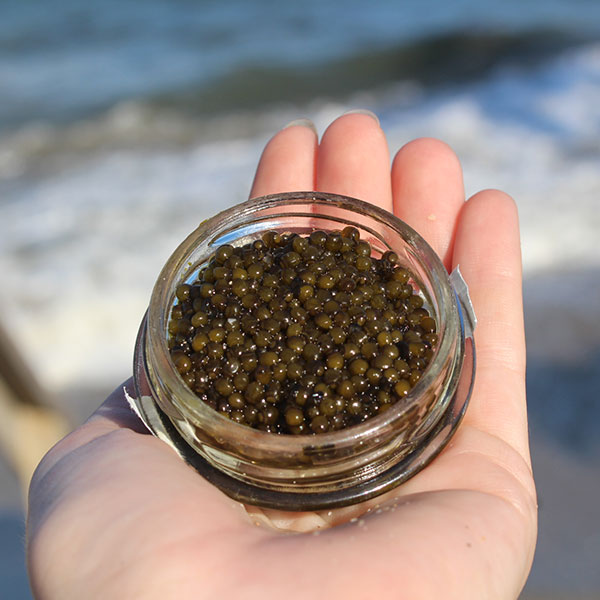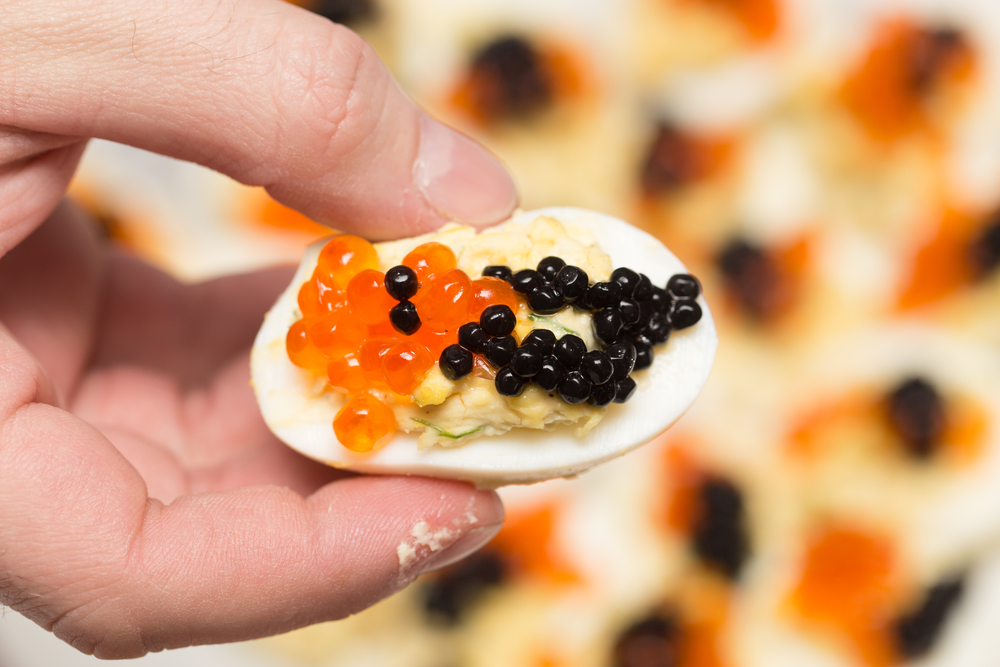
by HOCAFF Team | Oct 24, 2017 | General
Each original tin holds the eggs of an individual sturgeon. Caviar should never be “blended” or mixed with different fish. With the advent of aquaculture, a harvesting group of caviar-bearing sturgeon is almost always of the same age, size, & stock. They are also raised in the same conditions (water quality, temperature, etc.) and on the same diet. Biology, of course, can still play a part and make a unique “batch” per individual fish. Part of the initial grading process is to evaluate the quality and consistency of the original delivery. Rich will factor into account the size of the caviar grains (medium to large size) along with the color of the eggs, from light to dark.
By sampling the product, we are evaluating multiple factors – foremost the richness of flavor. Caviar – especially that of the Osetra sturgeon – should have a fresh, almost nutty flavor – and should be briny without being powerfully salty (“malossol” – Russian for “little salt” – is a common term used and is often on the caviar label itself.) The pleasing flavor needs to be equally offset by a firmness of egg texture – or the “pop” on the roof of the mouth – that is a traditional benchmark of superior caviar. Finally, the finish is evaluated on the palate – it should be creamy and flavorful, not bitter or “fishy.” All these factors play into the assessment of the quality grade assigned to the caviar.

by HOCAFF Team | Jun 28, 2016 | General
Raise the bar on your next recipe by adding caviar.
Caviar is a delicacy that has evaded the masses for some time, but more alternatives to the black gold found in the Caspian Sea are allowing people to either forego the imported pearls and enjoy domestic sources of caviar from different fish such as salmon, trout, flying fish, etc. or try both the classic delicacies and the American varieties.
Purists hold that caviar should only be served on toast points or unsalted crackers in order to allow the taste and texture to stand out as the star of the plate. They would then follow up their bite with a straight shot of frozen vodka. Others who are not strict about their caviar eating experience enjoy adding a few extras to their caviar such as crème fraiche, lemon wedges, minced onion, and more while accompanying their morsels with champagne.
Once you have tried caviar in its simplest form, perhaps you may be interested in seeing it in a supporting role amongst other components to make up an appetizer. Chefs have experimented with ways to cook with caviar, adding it to dishes to capitalize on distinct flavors in an effort to create culinary masterpieces. Some are masterfully complicated and others are perfect for looking fancy without breaking a sweat or the bank.
A traditional caviar appetizer is Caviar on Blini. A blini is a Russian pancake made with yeast. The blini – about the size of a silver dollar – is topped with crème fraiche and then topped with salmon or trout roe.
Upgrade your favorite secret recipe for deviled eggs with these toppings: a teaspoon of caviar, a dollop of crème fraiche and an elegant slice of chive. These deviled eggs with caviar are great at any gathering.
Pate is traditionally a mixture ground meat and fat in a spreadable form. This common French dish can be altered to take on a more aquatic air with the use of of smoked salmon and caviar. Serve the smoked salmon on a base of salmon mouse and top the stack with a dollop of caviar. Serve the smoked salmon and caviar pate with a slice of lime and avocado and eat with crackers.
If you’re feeling a bit adventurous, try a truffle custard with crab and caviar. This appetizer/first course is decadent and rich with ingredients like heavy cream, milk, crab meat, truffle oil, and of course caviar. To assemble this recipe, fill a short glass with the truffle custard and place the crab meat on the top. The creaminess of the custard will support the meat and prevent it from sinking. Top with a drop of black caviar.
Twice-cooked potatoes with caviar is special because of the type of caviar sitting atop the potato skin which is stuffed with a mixture of potato and crème fraiche. American Paddlefish caviar has a nutty and fruity flavor, introducing an interesting dynamic to the dish.
Regardless of which caviar recipes you experiment with and how you choose to plate your caviar, it should always be kept on ice when it is in its tin or jar. It also should be consumed on one occasion and should not be saved for later. The quality and freshness is integral to the tasting experience and adding caviar to a recipe is sure to take it to the next level. Find a wide selection of caviar as well as other fine delicacies and caviar recipe tips and at the House of Caviar and Fine Foods.


